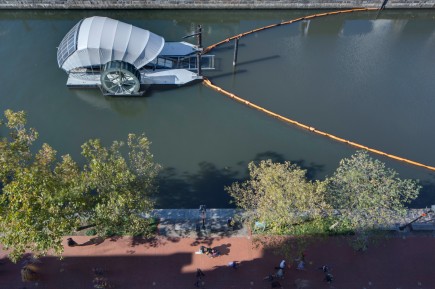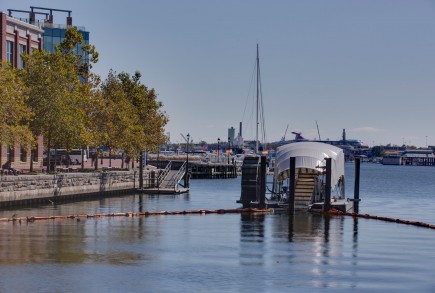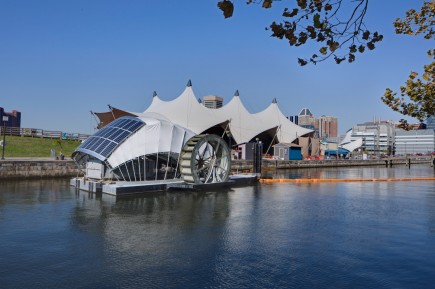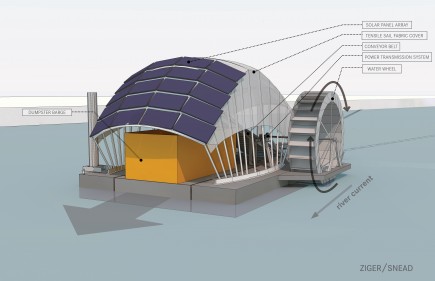1006 Morton Street
Baltimore, MD 21201
410.576.9131 | RW1haWw=
Baltimore Water Wheel
Public, Award Winning, Sustainable
View GalleryThe Water Wheel is a water powered trash interceptor designed and constructed by Clearwater Mills to collect trash and debris at the outfall of the Jones Falls River in Baltimore, Maryland. The river’s current operates a ladder type conveyor that lifts runoff debris from the water onto a dumpster barge, preventing trash and associated pollutants from entering the harbor. Supplemental power is provided by a solar panel array. The Water Wheel is part of an effort led by the Waterfront Partnership of Baltimore to restore habitat and make Baltimore's Inner Harbor swimmable by 2020. Moored between Piers 6 and 7 in April 2014, the Water Wheel is the first permanent waterwheel-powered trash interceptor in the harbor.
Ziger|Snead was tasked with designing a covering for the Water Wheel to contain collected trash on the barge and to protect the wheel’s mechanical equipment from rain and snow. The covering is constructed of sail fabric stretched across a series of bent steel ribs. The enclosure’s shape is derived from the programmatic requirements of the Water Wheel but also the visual and material vernacular of the harbor. Inspired by ship sails and nautilus shells, the Water Wheel’s structure morphs from the front to rear to maximize the opening at the mouth of the barge for trash collection while still protecting the mechanical equipment and collected garbage from wind and rain. The rear of the canopy gently splays outward to maximize solar angles for the southern facing solar array. The fabric for the canopy was made by a sail fabricator and cut to stretch tautly to the steel tube structure.






